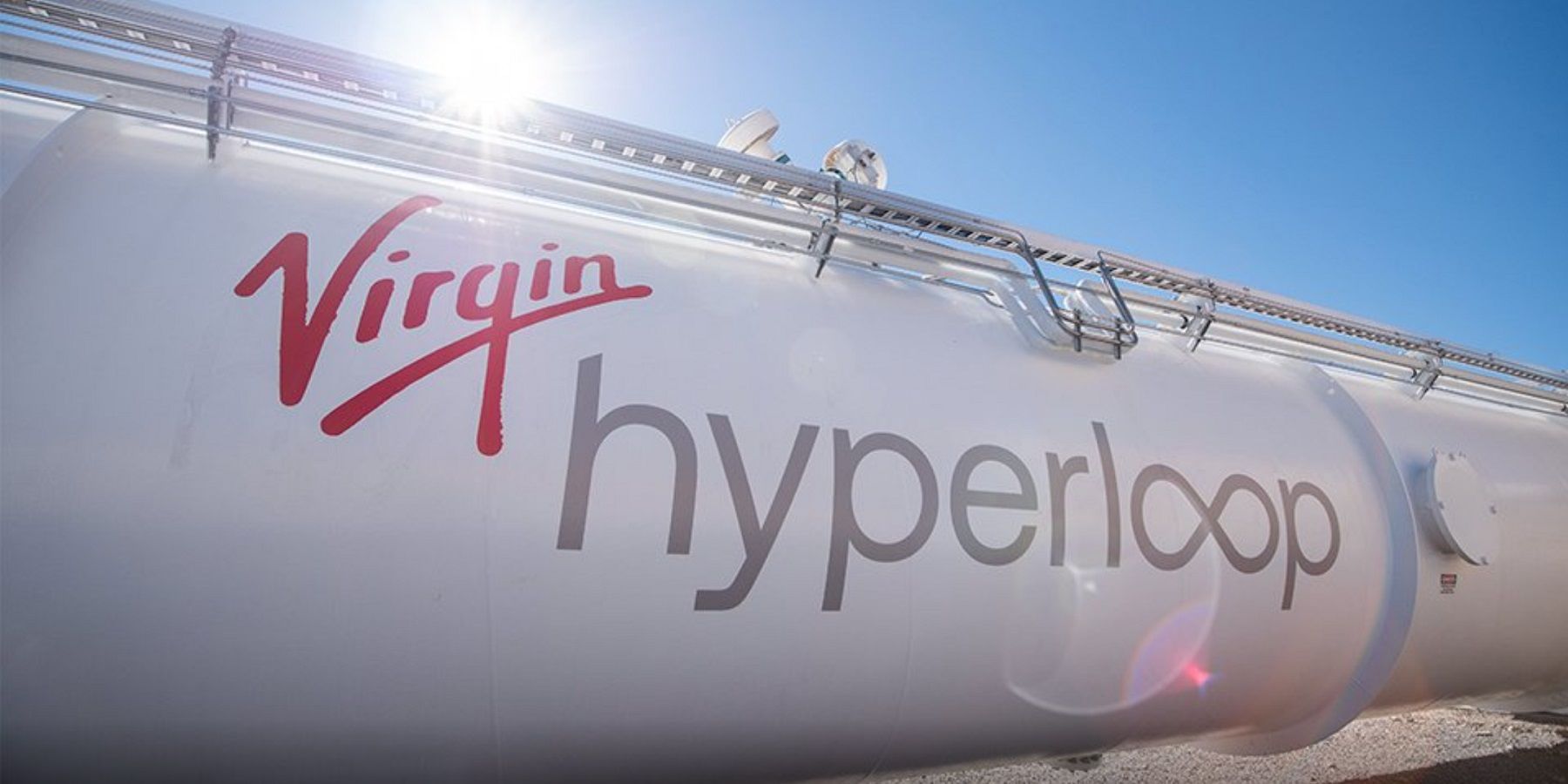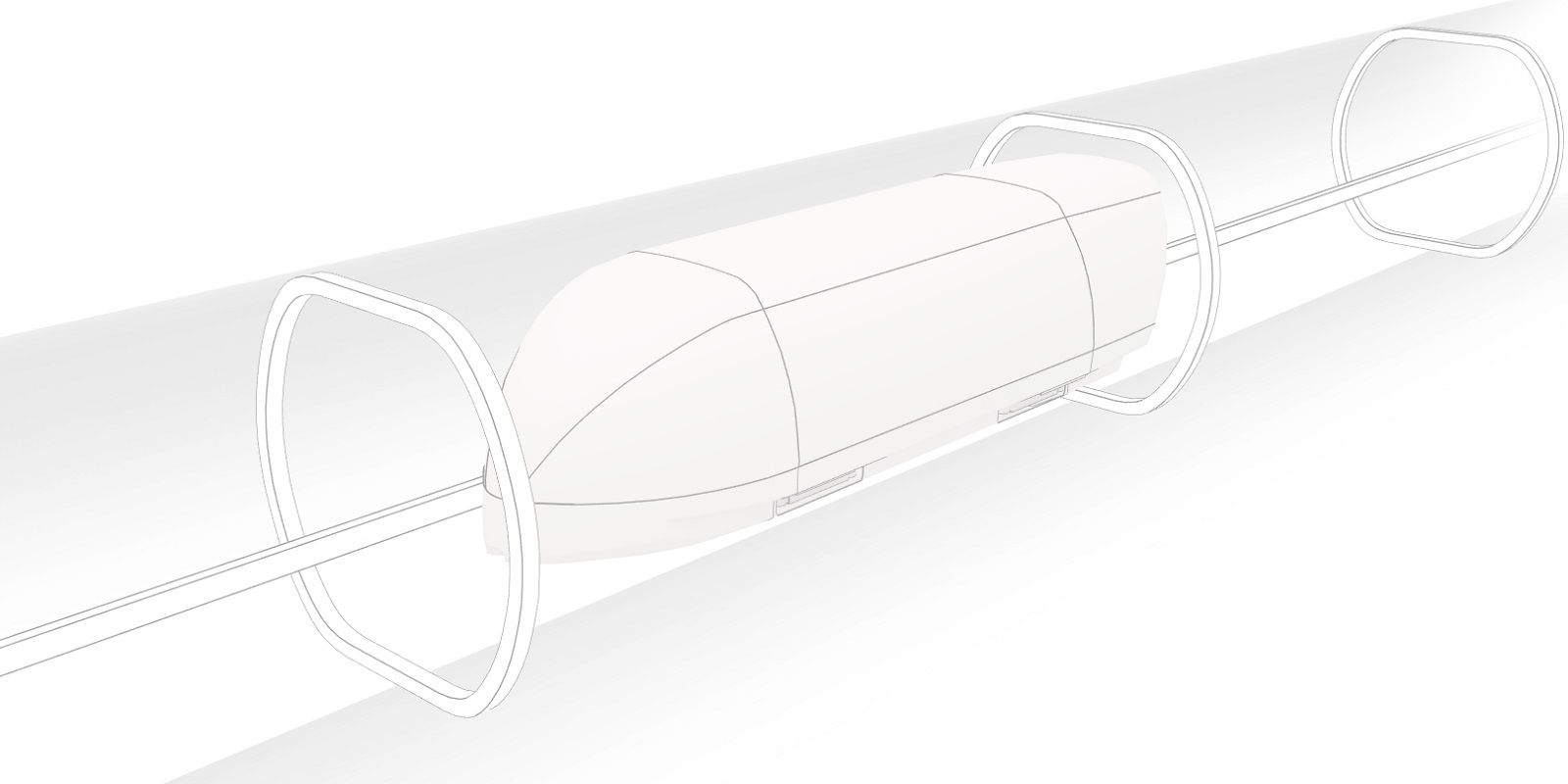
The first human travel by magnetic levitation, vacuum transport technology was successfully tested recently by Virgin Hyperloop. If that sounds futuristic, it is. While reminiscent of the suction tube transport shown in the animated TV show Futurama, this system operates more like a train, but at super high speeds. Even faster than bullet trains, the Virgin Hyperloop can reach speeds of 670 miles per hour.
The Hyperloop concept originated in 2012 with Tesla and SpaceX founder Elon Musk, who ‘open-sourced’ the idea providing a fair amount of detail. Musk said he was too busy with other projects to devote the time needed to pursue it further, but at least eight companies have taken up the challenge to build a working Hyperloop. The revolutionary aspect of this mode of travel is that it eliminates air resistance, since pods move within a sealed vacuum. As this is a maglev system, friction is also negated, making the movement quite similar to moving through outer space.
Virgin Hyperloop completed the first passenger test of this new type of transportation, moving a man and a woman half a kilometer, which is about a third of a mile. The test ran at just 107-miles per hour, but this has more to do with the length of the test track than the capability of the technology. On a full length transportation loop, speeds could reach 670-miles per hour. Josh Giegel, Co-Founder and Chief Technology Officer, and Sara Luchian, Director of Passenger Experience, were the test subjects traveling in an XP-2 Hyperloop pod. This new two-seater design was made specifically for the test with safety and comfort in mind and 400 previous runs were made without passengers before testing with people. When the project goes live, the production vehicle is expected to seat up to 28 passengers with room for luggage. The test site was Virgin Hyperloop’s DevLoop in Las Vegas.

Part of the challenge with any new consumer technology, and particularly in the transportation sector, is regulatory approval. This demonstration will certainly help with that. In July 2020, the US Department of Transportation (USDOT) and the Non-Traditional and Emerging Transportation Technology (NETT) Council released guidance to help clear hyperloop transportation in the United States. That means the structure has been laid for hyperloop regulation and deployment in the US. Virgin Hyperloop notes that it also establishes hyperloop’s eligibility for federal funding for projects. Given the great speed and efficiency of the combination of maglev and vacuum technology, forward-looking government agencies may well consider this as a possible mass transit alternative.
Virgin Hyperloop can be used for cargo transportation as well, and since the safety requirements would be less, there is a chance that could be the first real-world implementation of this technology. $400 million has been invested in the venture, so this is not a hobby project, but one with serious backing and interest. Virgin Hyperloop claims that the cost is 60 to 70-percent that of high-speed rail projects, with significantly lower operational costs compared to existing modes of transportation. After many years of research and development, Virgin Hyperloop’s first passenger test was flawless, perhaps helping to accelerate the transition to faster and more efficient travel in the future.
Source: Virgin Hyperloop
from ScreenRant - Feed https://ift.tt/35bzXi9

0 Comments